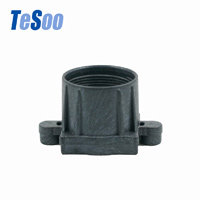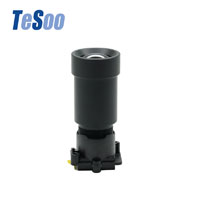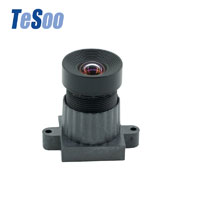Automotive Lens
In 2020, the global car camera shipments reached 165 million, the number of single-car equipped with a camera to 2.1. The number of single-car cameras is expected to reach 8 in 2025, the global car camera shipments reached 800 million, the market size of 33.6 billion yuan, CAGR of 37%. It is expected that in 2025 the market size of car camera modules exceeds 160 billion yuan, at present, the car camera module is mainly dominated by overseas Tier1, Tier2, along with the rise of new forces in car making, module specifications upgrade, the future automotive camera lens factory is expected to obtain part of the module share.
The role of automotive lens
The automotive lens is an essential sensor in autonomous driving. An automated driving system is usually divided into the perception layer, decision layer, and execution layer. Sensors used in the perception layer include cameras, LIDAR, millimeter-wave radar, ultrasonic radar, and other vision sensors, as well as speed and acceleration sensors. Compared with other sensors, the camera has a strong obstacle recognition ability and is an essential sensor in autonomous driving.
Classification of automotive lens
1) According to the different uses, cameras can be divided into imaging cameras, perception cameras (ADAS cameras). Imaging cameras are used for passive safety and store or send the captured images to users. ADAS cameras are used for active safety and need to capture images accurately.
2) According to different locations, in-vehicle cameras can be divided into front view camera, side view camera, surround-view camera, rearview camera, and in-cabin camera. ① Front view camera is used to achieve a variety of ADAS functions (collision warning, lane departure warning, etc.), the task is heavy, the highest specifications, the front view can be divided into the monocular, binocular, trinocular camera, monocular camera development earlier, the current technology development is more mature, low cost of mass production, but limited by a single camera fixed focal length limit, it is difficult to take into account the large field of view angle (wide-angle) and long detection distance (telephoto). Binocular and multi-camera to a certain extent to overcome the limitations of a single camera, to Tesla trinocular camera, for example, three cameras including the main field of view camera (covering most of the traffic scenes, the maximum monitoring distance of 150 meters), wide-angle camera (field of view up to 150 °, able to capture traffic lights, obstacles in the driving path and objects close to, very suitable for city streets, low speed (slow-moving traffic scenes), telephoto camera (able to clearly capture distant objects, suitable for high-speed traffic scenes. (The maximum monitoring distance is 250 meters). The side-view camera is used to monitor the side front or side rear scenes to achieve blind-spot monitoring. The surround-view camera adopts a wide angle camera lens, which is assembled around the car to obtain a 360° image of the body and stitch it together to realize panoramic parking and can realize road route perception if the algorithm is added. The rearview camera adopts a wide-angle lens for reversing assistance. The in-cabin camera is used to monitor the driver's status and realize the fatigue alert function.
Popular Camera Lens
Hot Camera Lens Articles

 English
English 

